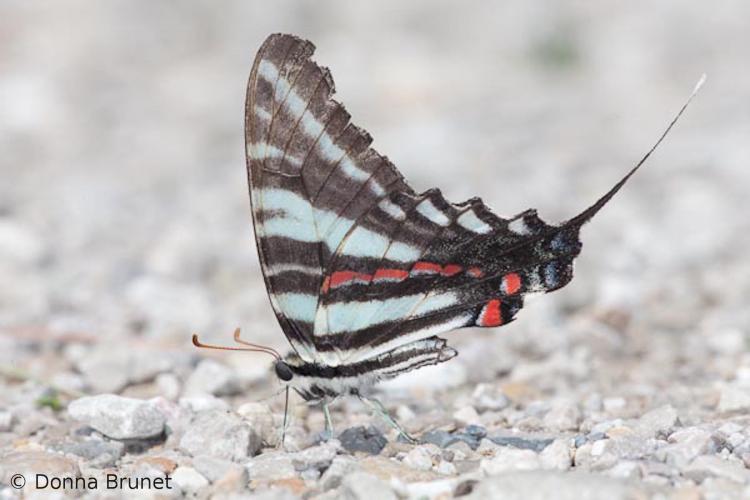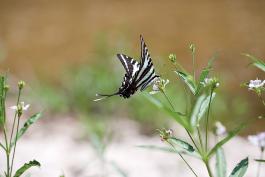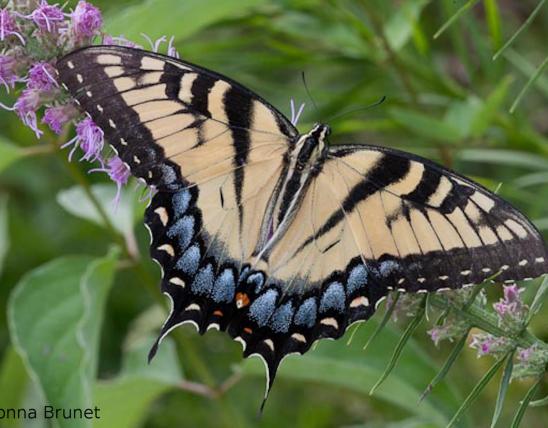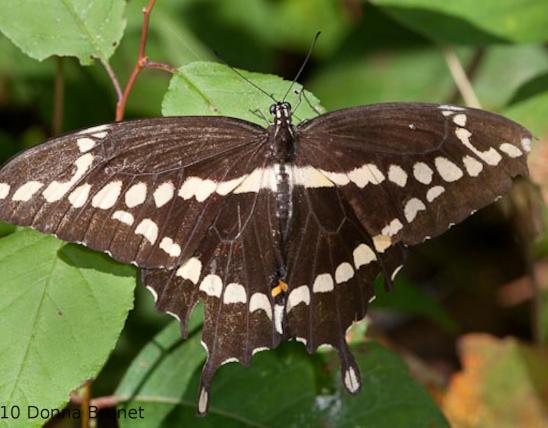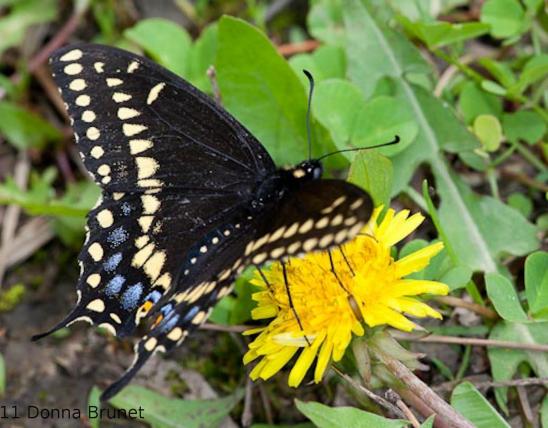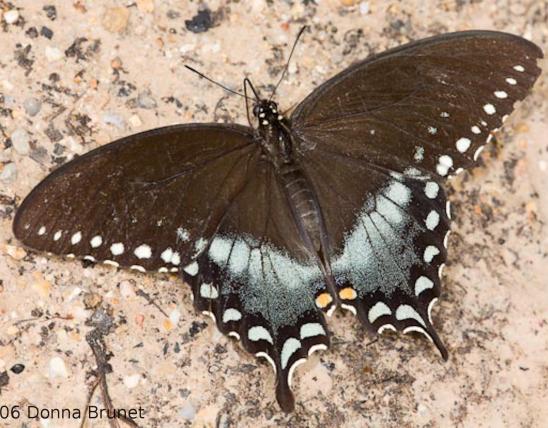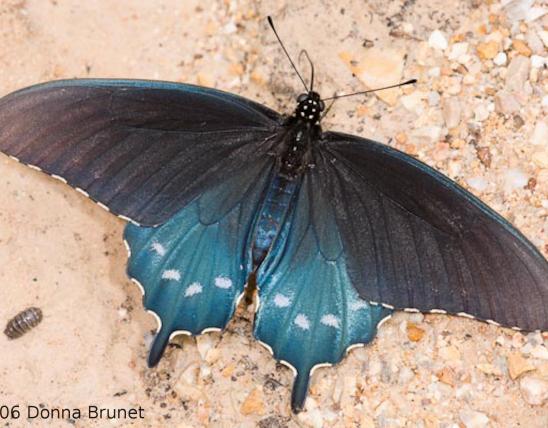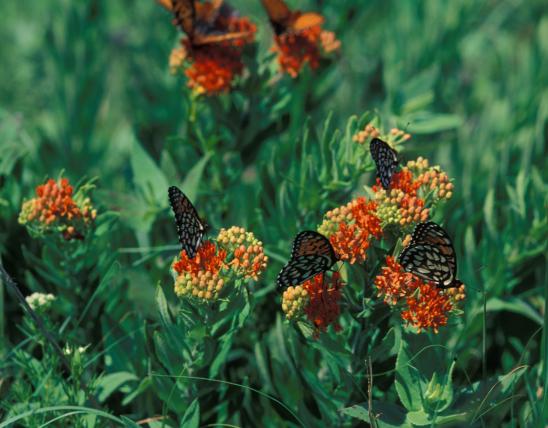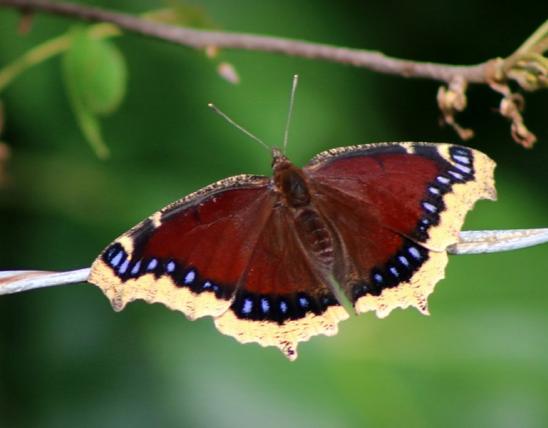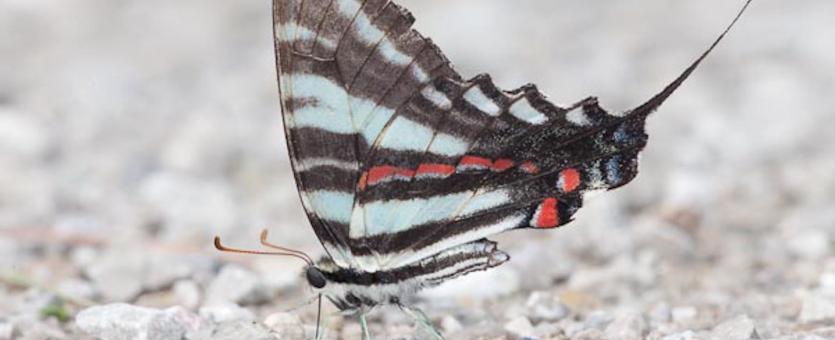
No other butterfly in North America looks like the zebra swallowtail. Adults are unmistakable with their black and white stripes and long hindwing tails. Individuals flying during the summer have wider black stripes and longer tails than spring individuals.
Caterpillars are bluish green; the body is crossed with yellow and white bands, with a wider black band across the humped third segment of the thorax.
Wingspan: 2–3 inches.
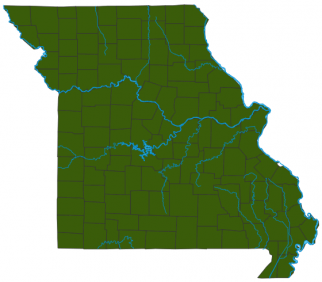
Statewide.
Habitat and Conservation
Moist, forested areas; this butterfly seldom wanders far from its woodland haunts. As with other butterflies, they are usually found in the same habitats as their food plants, in this case, the bottomland forests where pawpaw trees usually grow.
Zebra swallowtails sometimes gather in groups at mud puddles and in creek beds.
Food
The caterpillars require the foliage of pawpaw trees (Asimina triloba).
Because they have a shorter proboscis (“tongue”) than most other swallowtails, adult zebra swallowtails visit flowers with comparatively short floral tubes, including milkweeds and clovers. They may leave forests in search of nectar in open areas.
Status
Breeding resident.
Life Cycle
Adults fly from late March to October. There are several broods. Adults that emerge in spring are smaller and have shorter tails then those emerging later. Like most swallowtails, females deposit one egg at a time on leaves. Advantages of laying single eggs include less competition for food among caterpillars and a reduced risk of all of a female’s offspring being attacked by a predator or parasite — or by each other.
Human Connections
In 2019, the pawpaw tree, which is the food plant of zebra swallowtails, was named Missouri's official state fruit tree. When more people plant native pawpaws, it widens the habitat for zebra swallowtails.
For philosophers and writers, butterflies are a rich source of inspiration and of symbols. Nathaniel Hawthorne wrote about the elusiveness of joy: “Happiness is a butterfly, which when pursued, is always just beyond your grasp, but which, if you will sit down quietly, may alight upon you.”
Ecosystem Connections
This species depends on its particular host plant (pawpaw), and therefore on stable lowland forested habitats, for survival.
The caterpillars are herbivores that graze on vegetation, and the adults serve a role in pollination. All stages provide food for predators.
